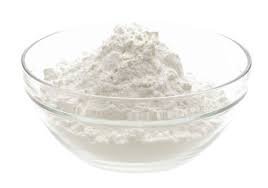Calcium carbonate powder is widely used in various industries, from construction to pharmaceuticals. Making this powder involves a straightforward process that can be broken down into a few essential steps. Here’s a simple guide to help you understand how calcium carbonate powder is made.
Understanding Calcium Carbonate
Calcium carbonate is a natural compound found in rocks, shells, and minerals. It’s commonly used in products like cement, paints, and even as a dietary supplement. The powder form is made by processing natural calcium carbonate sources to create a fine, usable product.
Gathering Raw Materials
The first step in making calcium carbonate powder is to gather the raw materials. The most common sources are limestone, marble, and chalk. These materials are rich in calcium carbonate and are mined from quarries. The quality of the raw material can affect the final product, so it’s important to choose high-quality sources.
Crushing and Grinding
Once the raw materials are collected, they are crushed into smaller pieces. This process makes it easier to handle and process the material further. After crushing, the material is ground into a finer powder. This grinding process helps achieve the desired texture and consistency of calcium carbonate powder.
Calcination
The next step is calcination. This involves heating the crushed material to high temperatures in a kiln. During this process, calcium carbonate breaks down into calcium oxide and carbon dioxide. The calcium oxide is then used in the production of the powder. The temperature and duration of calcination are crucial for ensuring the quality of the calcium carbonate powder.
Hydration
After calcination, the calcium oxide is mixed with water in a process called hydration. This step helps convert calcium oxide back into calcium carbonate. The mixture is then allowed to dry, which helps in forming a fine, dry powder.
Milling and Classification
The hydrated material is then milled to achieve the final powder consistency. This milling process ensures that the calcium carbonate powder is of uniform size and quality. After milling, the powder is classified to remove any oversized or undersized particles, ensuring that the final product meets the required standards.
Quality Control
Quality control is an essential part of making calcium carbonate powder. Samples of the powder are tested for purity, particle size, and other properties. This ensures that the powder meets industry standards and is suitable for its intended use.
Packaging and Storage
Once the calcium carbonate powder passes all quality tests, it is packaged into bags or containers. Proper packaging helps protect the powder from moisture and contamination. The packaged powder is then stored in a dry, cool place until it’s ready for distribution.
Conclusion
Making calcium carbonate powder involves a series of steps, from sourcing raw materials to final quality control. By following these steps, manufacturers can produce a high-quality product that meets various industry needs. Whether used in construction, manufacturing, or even as a supplement, calcium carbonate powder plays a vital role in many applications.



